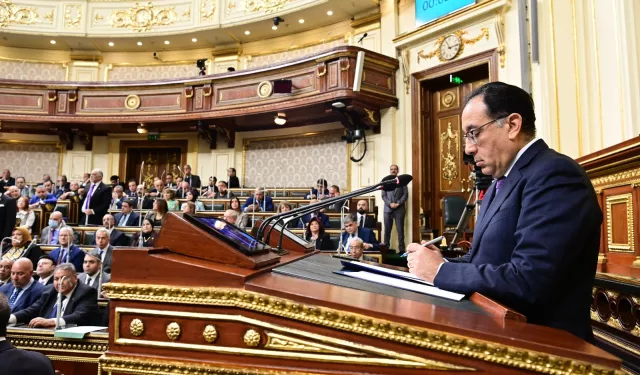An Egyptian opposition lawmaker has accused the government of manipulating official poverty statistics by withholding the widely used monetary poverty index from a national survey.
Freddy El-Bayadi, a member of parliament representing the Egyptian Social Democratic Party, submitted an urgent question to the prime minister and the planning minister today. His inquiry follows the partial release last year of the 2021-2022 Household Income and Expenditure Survey, which had been withheld for three years.
El-Bayadi noted that the Central Agency for Public Mobilization and Statistics (CAPMAS) removed the customary monetary poverty indicator from the survey, substituting it with a new multidimensional poverty index that reported a lower rate of 21.2%, while the traditional monetary poverty data remains blocked.
Last week, fact-checking platform Saheeh Masr reported that CAPMAS restricted access to the full survey, including the monetary poverty rate, to journalists and researchers who filed detailed requests approved under what it described as “security instructions.”
The most recent Household Income and Expenditure Survey was conducted in 2019–2020, which showed a poverty rate of about 29.7% of all Egyptians. According to Saheeh Masr, CAMPAS has since halted the release of the subsequent 2021–2022 edition.
El-Bayadi argued that the removal of the monetary poverty index, a first in nearly half a century, not only presented an unrealistically low poverty picture but also violated constitutional provisions guaranteeing public access to information.
“Manipulating numbers may beautify reports, but it does not fool the stomachs of the hungry or erase the suffering of millions of Egyptians,” he said in a statement.
He noted that the multidimensional poverty index, created in 2010 by the U.N. Development Programme and Oxford University, is designed to complement — not replace — the monetary measure. It factors in access to services such as education, health care and housing, and may register lower poverty levels even if household purchasing power declines.
In contrast, the monetary poverty index offers a more direct and widely recognized measure. Used internationally for decades, it assesses whether a household’s income is sufficient to meet its basic needs, such as food, water, clothing, and housing, thereby accurately reflecting citizens’ purchasing power.
El-Bayadi also criticized the latest survey’s income calculations, arguing that their inclusion of government subsidies for food and bread as household income artificially lowered the poverty rate amid high inflation.
He argued that this measure violates several constitutional articles, including Article 68, which guarantees citizens the right to obtain information, data, statistics, and documents from various sources, and obliges state institutions to ensure transparency and disclosure.
He emphasized that publishing only half the survey results while withholding the monetary poverty index directly contradicts these principles.
Yesterday, President Abdel Fattah El-Sisi underscored the importance of making data and information available to the media, especially during crises that attract public attention. His remarks came during a meeting with Prime Minister Mostafa Madbouly and chairmen of the Supreme Council for Media Regulation, National Press Authority, and National Media Authority.
The debate was sparked when TV anchor Lamees El Hadidi questioned the absence of the poverty report via X on Aug. 3, noting that the World Bank estimated the poverty rate had risen to 32.5% in 2022.
CAPMAS responded that it had published the 2020-2021 survey using the multidimensional methodology and would release the next edition in October.
El Hadidi found the agency’s response unsatisfying. “With all due respect to the efforts of the Central Agency for Public Mobilization and Statistics,” she wrote, “the most important questions have not been answered: How many poor people are there in Egypt? What is the poverty line being used for measurement? And how has the standard of living of Egyptians changed in recent years?”
She described it as “strange” that such information, even under a new methodology, would be made available exclusively to specialists, calling this “unprecedented in Egypt.”
El-Hadidi also noted that the original report was a “massive effort,” running to 113 pages, while the multidimensional poverty index is no more than 10 pages, representing only a small part of the full data.
On Saturday, independent news site Mada Masr cited unnamed sources on sources as saying the withheld 2021-2022 survey data showed a poverty rate of 34% — the highest since the survey began in 1999-2000.
